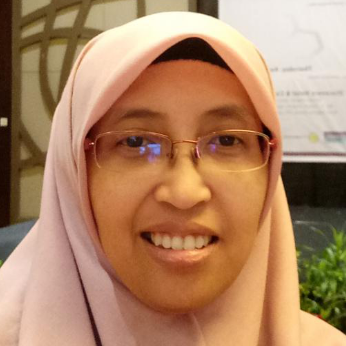
Qurrotul Aini
Work place: Department of Information System, Universitas Islam Negeri Syarif Hidayatullah Tangerang Selatan, 15412, Indonesia
E-mail: qurrotul.aini@uinjkt.ac.id
Website:
Research Interests: Business & Economics & Management, Business, Computer Science & Information Technology, Network Architecture, Multimedia Information System
Biography
Qurrotul Aini was born in Malang, East Java province Indonesia. She received the B.Eng. degree in electrical engineering from Brawijaya University, the M.Eng. and Doctor degree in electrical engineering from Institut Teknologi Sepuluh Nopember Surabaya.
She currently a lecturer in the Department of Information System, Universitas Islam Negeri Syarif Hidayatullah Jakarta, Indonesia. In 2015, she collaborated research with Assoc. Prof. Takuya Terasawa from Tokyo University of Technology in applying swarm intelligence techniques in maritime ad hoc network.
Dr. Aini is a membership of IEEE since 2013. Also, she is join the Indonesian professional organization such AISINDO and APTIKOM. Her research interest are in ad hoc network, computer science, business intelligence, and multimedia application.
Author Articles
Indonesian Sign Language: Detection with Applying Convolutional Neural Network in a Song Lyric
By Qurrotul Aini Ferdian Rachardi Zainul Arham
DOI: https://doi.org/10.5815/ijem.2024.06.01, Pub. Date: 8 Dec. 2024
Indonesian Sign Language (BISINDO) is one of the visual-based alternative languages used by people with hearing impairments. There are hundreds of thousands of Indonesian vocabularies that sign language gestures can represent. However, because the number of deaf people in Indonesia is only seven million or 3% of the population, sign language has become unfamiliar and challenging for some normal or laypeople to understand. This study aims to classify and detect gestures in sign language vocabulary directly based on mobile. Classification learning techniques are needed to recognize variations in gestures, such as machine learning with supervised learning techniques. The development of this research uses the convolutional neural network method with the help of techniques from the single shot detector architecture as the object of detection and the MobileNet architecture for classification. The object is 32 gestural vocabularies from the lyrics of the song 'Bidadari Tak Bersayap' with a dataset of 17,600 images. Then the images are divided into two parts of the model based on the nature of the biased and non-biased data, amounting to 8 and 24 classes, respectively. The research results in a biased model prediction of 15 out of 16, while a non-biased model of 36 out of 48 correct predictions with a total accuracy of real-time based testing on mobile of 93.75% and 75%, respectively.
[...] Read more.Potential Halal Tourism Destinations with Applying K-Means Clustering
By Qurrotul Aini Eva Khudzaeva
DOI: https://doi.org/10.5815/ijisa.2019.09.02, Pub. Date: 8 Sep. 2019
The clustering application can be used to develop a variety of tourism potential. Currently, halal tourism is a national income that increases every year and is a favorite for Indonesia. The development of halal tourism is supported by a majority population Muslim and as a halal tourist destination in the world. The objective of this study is to investigate the number of clustering with partitioning approach i.e. K-Means (KM) with two simulation scenarios. The characteristics similarity of this method refers to 11 indicators in 2017 Global Muslim Travel Index (GMTI). The output of this study is to display the information in the form of a map and make it easier for the public to determine which halal tourism destinations are high, medium, and low potential.
[...] Read more.Other Articles
Subscribe to receive issue release notifications and newsletters from MECS Press journals